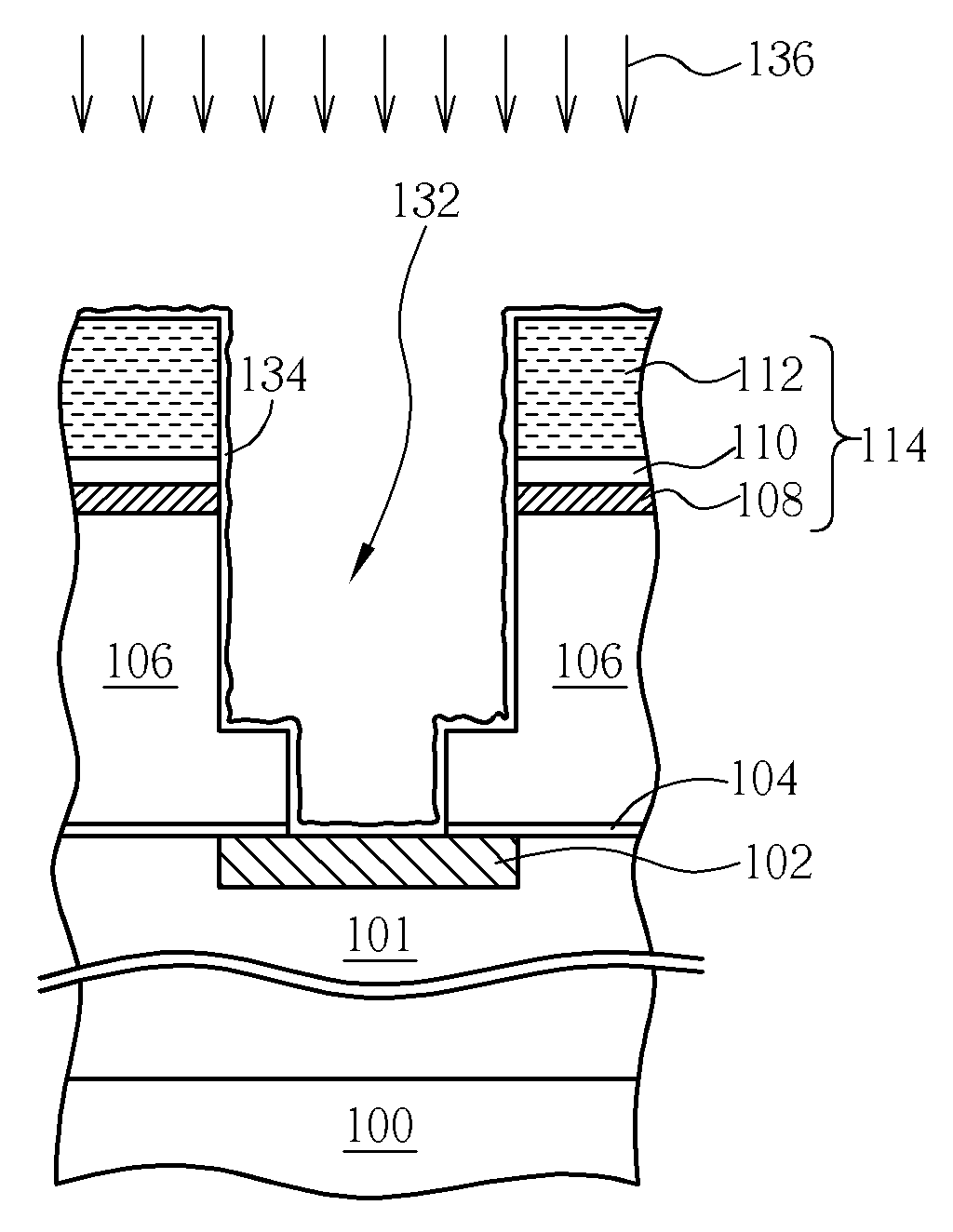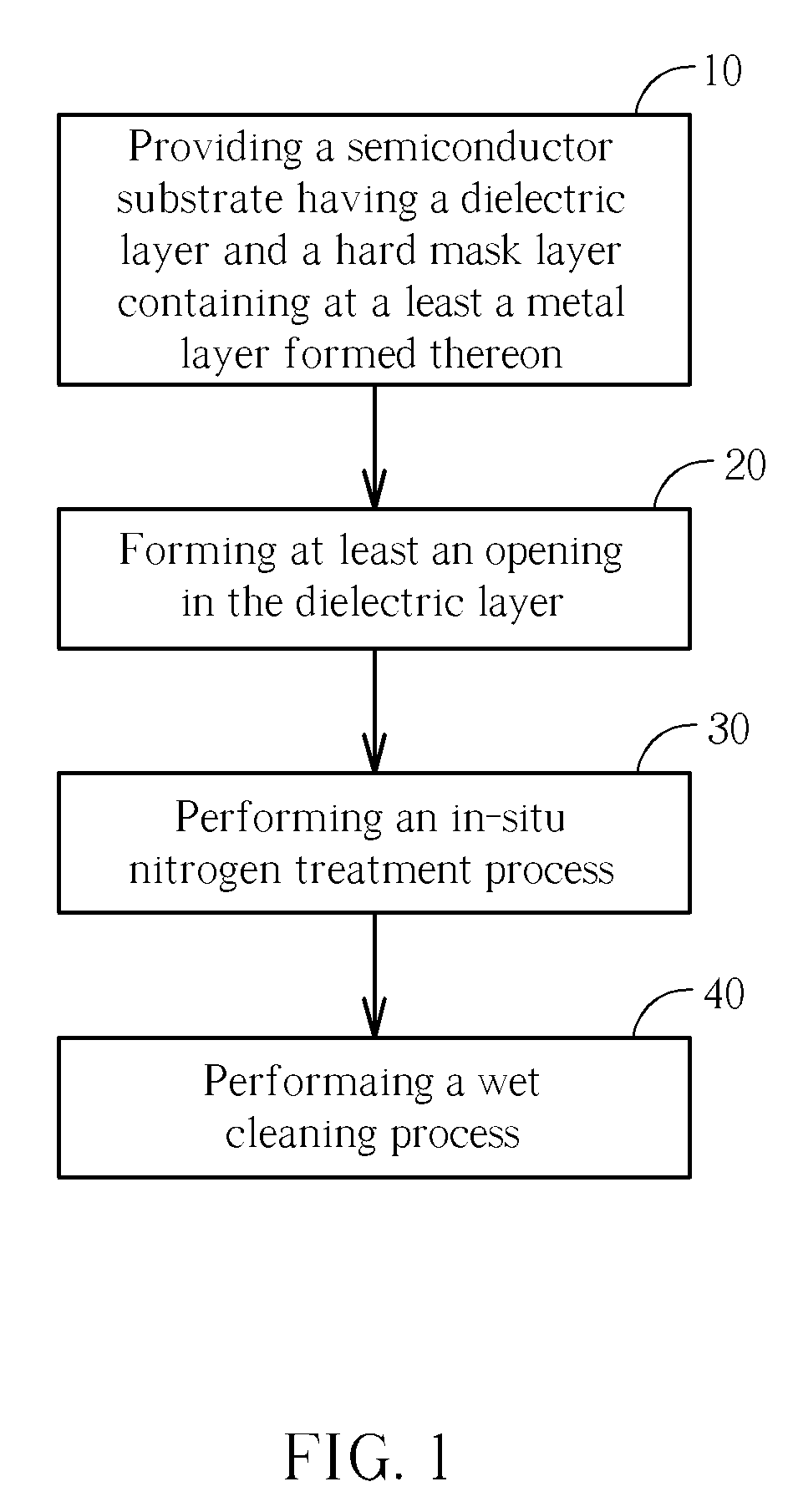Cleaning method following opening etch
a cleaning method and opening etching technology, applied in the field of cleaning methods following opening etching, can solve the problems of metal residues, difficult to remove metal residues, and difficult to clean up the bond formed between silicon atoms and organic groups, and achieve the effects of improving throughput, high cleaning efficiency, and simplifying the fabrication process
- Summary
- Abstract
- Description
- Claims
- Application Information
AI Technical Summary
Benefits of technology
Problems solved by technology
Method used
Image
Examples
Embodiment Construction
[0019]Please refer to FIG. 1, which is a flow chart of a cleaning method following an opening etch according to the present invention. As shown in FIG. 1, in step 10, at first, a semiconductor substrate such as a silicon substrate or a silicon-on-insulator (SOI) substrate, etc, is provided. A dielectric layer and a hard mask layer are formed on the semiconductor substrate. The hard mask layer comprises at least a metal layer. The semiconductor substrate may further comprise at least a functional device such as a Metal Oxide Semiconductor (MOS) transistor, etc thereon. The dielectric layer is a low-k dielectric layer such as a carbon-doped oxide (CDO) layer, an organo-silicate-glasses (OSGs) layer, a fluorinated silica glasses (FSGs) layer, or an ultra low-k (k<2.5) material layer, etc. The method of forming the low-k dielectric layer comprises a spin-coating process, a plasma-enhanced chemical vapor deposition (PECVD) process, or a high-density plasma chemical vapor deposition (HDPC...
PUM
| Property | Measurement | Unit |
|---|---|---|
| power | aaaaa | aaaaa |
| reaction time | aaaaa | aaaaa |
| dielectric constants | aaaaa | aaaaa |
Abstract
Description
Claims
Application Information
 Login to View More
Login to View More - R&D
- Intellectual Property
- Life Sciences
- Materials
- Tech Scout
- Unparalleled Data Quality
- Higher Quality Content
- 60% Fewer Hallucinations
Browse by: Latest US Patents, China's latest patents, Technical Efficacy Thesaurus, Application Domain, Technology Topic, Popular Technical Reports.
© 2025 PatSnap. All rights reserved.Legal|Privacy policy|Modern Slavery Act Transparency Statement|Sitemap|About US| Contact US: help@patsnap.com



